|
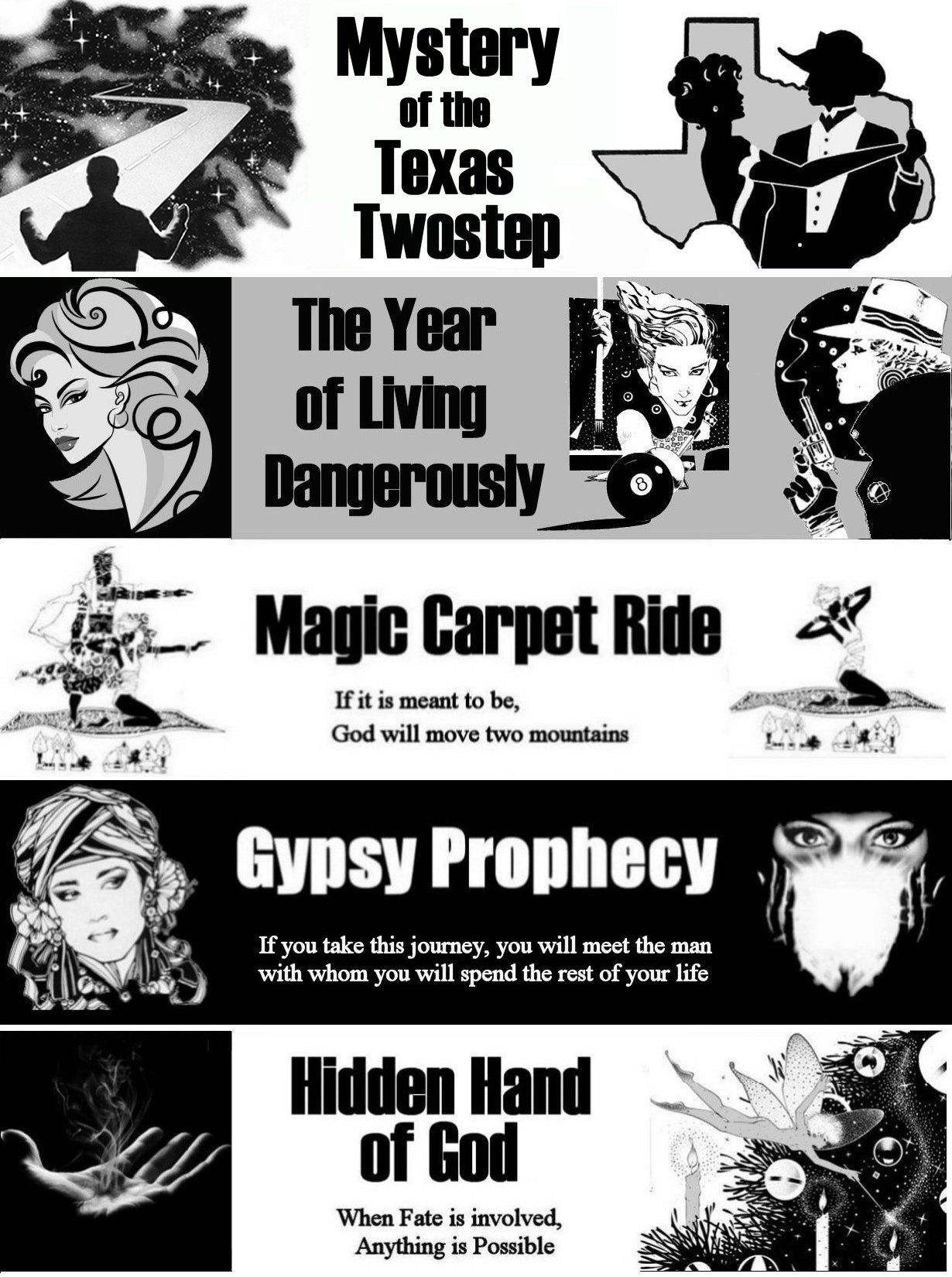
|
MYSTERY OF THE
TEXAS TWOSTEP
CHAPTER SEVENTY:
THE premiere OF URBAN COWBOY
Written by Rick
Archer
|
 |
Rick
Archer's Note:
As things turned
out, I was in the hospital for eight days. We will
return to that story shortly.
During my stay,
Urban Cowboy held its world premiere in a
theater not far from my hospital.
|
|
THURSDAY, JUNE
5, 1980
THE WORLD PREMIERE
OF URBAN COWBOY
|

In the summer of 1979, the
Houston news and gossip circles were dominated by
the presence of one John Travolta, who lived in the
city while filming Urban Cowboy in
nearby Pasadena. This was
only the fourth leading role for the 25-year-old
actor, but he was already arguably the world's
biggest movie star.
Once
they discovered his address, teenage girls
camped out in cars in front of
the Memorial-area home
Travolta was renting. One
clever girl found a way to break in. She was soon evicted from his closet.
Following Travolta's
wrestling match with Debra Winger in a muddy pothole
outside of Gilley's, one enterprising
fan extracted the
muddy water, put it in bottles
and sold them for $25.
That was bizarre enough. Even more bizarre,
people treated it like holy water. 1979 might have been the strangest summer Houston
had ever seen. But that was
just the warm-up.
One year later, the city would learn what
weird really was. On June 5, 1980, Urban
Cowboy celebrated its world premiere
situated at a
less-than auspicious Houston cineplex.
The story revolved around the up-and-down
romance of Bud and Sissy, two 'Gilleyrats'
who wrapped their lives around the club. Their
whirlwind
marriage hit the rocks when they encountered the
movie's third co-star,
Wes, the villainous operator of the mechanical bull.
The movie concluded with a giant fight scene.
After
the movie,
Lynn Wyatt,
Houston's leading international socialite,
hosted a star-studded
Charity Gala.
The
party's location was Gilley's, the
Pasadena nightclub that billed itself as the world's
largest honky-tonk. Taking
note of the club's size, Ms. Wyatt opened the event
to the public. Watching the after-party in awe
were 3,500 star-struck Houstonians
who paid top dollar to rub elbows with the rich and
famous. One has to
wonder if Closet Girl and Muddy Water Girl were in
attendance.
Travolta and Debra Winger attended the after-party,
as did their co-stars, a slew of Hollywood executives, an
even larger slew of real-life Gilleyrats who
had
appeared as extras, plus a
couple dozen celebrities near and
dear to
Lynn Wyatt's heart.
The scene was
described as surreal.
Although Mick Jagger's
Texas-born girlfriend Jerry Hall fit right in, no one could quite figure
out what Andy Warhol was doing there.
Unfamiliar with Western attire, Mr. Warhol looked
distinctly out of place. Fashion designer Diane von
Furstenberg took Andy Warhol's picture while he
sat on the mechanical bull taking a picture of her.
Jerry Hall asked Andy to dance, but he turned her
down.
Gilley's owner Mickey Gilley was
interviewed. When asked about the
scene-stealing mechanical bull, Gilley said he was
not a fan.
'I thought it was the biggest mistake anybody could
ever make,' said Gilley, laughing. 'I figured people
are going to get hurt on it, and sure enough, they
did. The next thing I know, we got this guy
from New York coming down and he wrote this article
called The Ballad of the Urban Cowboy.
I did not like the article. I thought the guy
was putting country music down. However,
Sherwood Cryer, my partner, said, 'Mickey, don't
you dare say anything bad about the article.
We may get a film with John Travolta in it.'
When
Cryer
said 'John Travolta', I changed my mind.
'Wait a minute. Travolta's coming off
Saturday Night Fever. They should call
this movie Country Night Fever.''
|
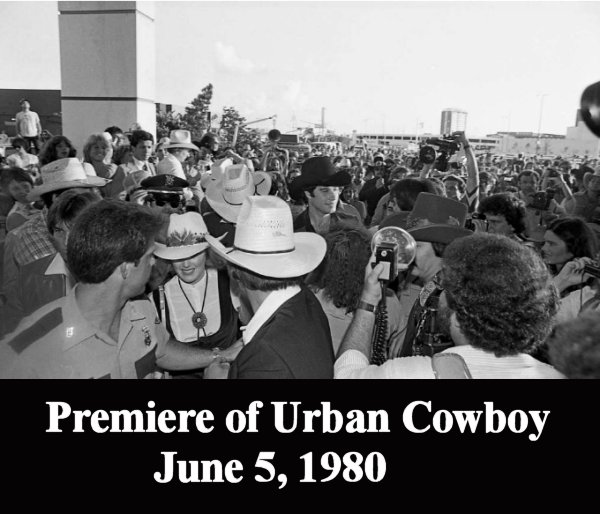
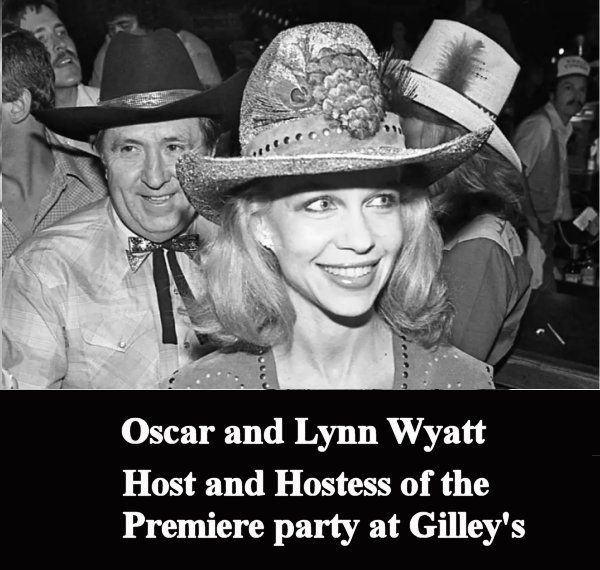 |
|
 |
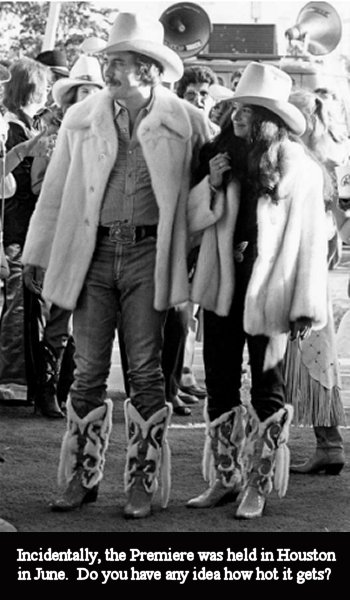 |
The Urban Cowboy premiere was
considered by many to be a
giant insult to traditional Country sensibilities.
To be Country is to be modest. To be Country is to
show respect to one another. This movie was supposed to
pay
tribute to the current Country lifestyle, but instead
here were
glamorous people parading around Gilley's
as if they owned the place. Which, in a way, I
suppose they did. Hollywood paid for the movie, so
they were going to do things their way.
However, they rubbed true country
people the wrong way. The Gilleyrats concluded this was a
Disco crowd attempting to disguise themselves by wearing
gaudy Cowboy clothes.
Truthfully, no self-respecting Cowboy would
dream of wearing these kind of outfits. The
backlash was swift. People concluded
this movie was made by Hollywood City Slickers who had deliberately shined an ugly light on Gilley's and the
modern Western lifestyle in general. Resentment
and distrust of the Establishment had been growing for
some time and now the dam broke. The new Rebel
Yell was 'Disco Sucks, I was Country before Country
was Cool!'
City versus
Country hostility had existed long before the movie, but the
tension was not particularly serious. The movie was
correct in that many country folk had moved to Pasadena and
Houston in search of jobs. The movie was also correct
that displaced Country folk preferred to stick to their
roots and boots. Cowboys avoided the Discos like the plague
while most Houstonians did not know Western dancing
existed. Since
neither the Urbans nor
the Cowboys had the slightest desire to
visit the other's
stronghold,
both groups were perfectly
content to leave things
the way they were. Pre-Urban Cowboy, everybody stayed in their corner
and left each other alone. Now, thanks to
the movie, a million people in Houston who knew nothing
about Country Dancing were encouraged to give it a try.
And so they did.
Furthermore, thanks to
the movie, all the Houston Discos had been closed,
disappointing countless Disco dancers. Did the
Kicker Crowd show sympathy? Hell no! Good
riddance! Now the Disco dancers had an axe of their
own to grind. If Disco dancers wished to keep dancing,
they had nowhere else to go but invade the Western Citadels. Urban Cowboy
had been
hailed as the harmonious blending of two cultures.
Oh really? Instead just the opposite happened.
Fueled by ample bitterness on both sides, the ensuing uproar caused by the movie made for an unusual
battleground: Houston's country-western dance floors.
And so the Collision of Two Worlds
began, the strangest civil war of all time.
|
JUNE 1980
SO WHAT DID THE
CRITICS THINK?
|
The long-awaited
premiere for
Urban Cowboy
took place in Houston on June 5, 1980. The movie was
released to the general public in Houston theaters the following day.
Alas, I was still in the hospital, so for the time being all I could do
was read about it. My favorite
review was written by Michael Ennis of Texas Monthly.
Here is his
summary of the celestial event.
|
Hail to the Conqueror Worm!
Michael Ennis, Texas Monthly,
August 1980
The real
star of this movie was not John Travolta, but rather the
mechanical bull and a tequila worm. The plot was
essentially Beach Blanket Bingo in a western
setting with the mechanical bull replacing surfboards.
Boy meets girl, boy wins girl, boy blows it with girl, boy
takes up with other girl (a reprehensible bitch), girl takes
up with other guy (a reprehensible bully), but they still
love each other, so boy predictably retakes girl in the end
by thrashing the bully. They live Happily Ever
After, etc, etc, etc.
The most moving
scene in the movie comes when the reprehensible bully eats
the worm out of the mescal bottle. All the out of
towners in the theater really oohed and aahed over this
stunt, which I predict will be the big cult item to come out
of Urban Cowboy.
When the lights came
on again
at the premier, people
stood around in states that seemed to range from physiological
shock to psychological devastation.
It was like a party someone
hosts to show off what a fabulous
job the new interior decorator has done.
The appalled guests know they can't dare speak the truth
but that they also cannot conceivably force
themselves to compliment the pretentious
fiasco
either.
After a while, some outspoken types begin to violate the uneasy
silence.
'Is it just me, or was
the movie really
that bad?'
At that
point, others timidly venture similar unflattering
comments.
A shrewd and knowledgeable Hollywood columnist said the
movie was mediocre, predicted it would make money, and said
that Western Chic would be dead in a year... which is one
year more than I am giving it.'
|
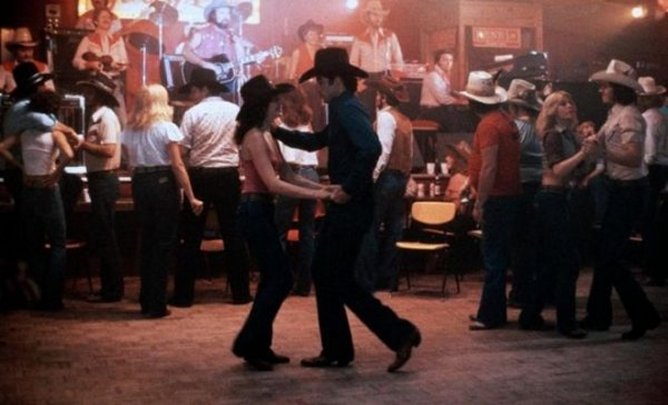
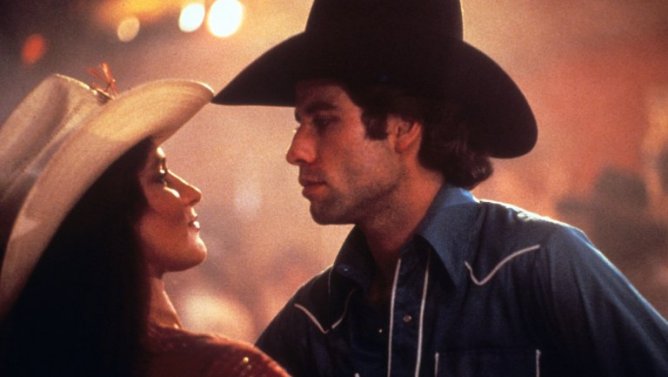 |
One film critic used Urban
Cowboy as an interesting example of of a movie where
a media person had to choose between integrity or continuing to stoke the
publicity machine.
Michael Sragow
was a well-known movie critic who worked for several
newspapers and magazines. I cannot be sure, but I
believe Sragow was working for the Baltimore Sun when Clay
Felker asked him (hired him?) to write a review for Urban
Cowboy. 20 years later, Sragow had something
interesting to say about his assignment.
Love-hate flashbacks from a real-life film critic
-- Written by Michael Sragow
Baltimore Sun Movie Critic,
July 2001
'Film
reviewers must be resolute to remain independent voices
as opposed to industry hacks.
The stronger and more
straightforward I became in expressing my likes and dislikes,
the more positive reaction I got from readers -- even those on
my own paper's staff.
For example, the misbegotten movie known
as Urban Cowboy had started life as a cover story in Clay Felker's
Esquire.
As editor in chief,
Clay Felker obviously had
enormous say in commissioning that story and featuring it so
prominently.
The picture was designed to be John Travolta's
big comeback after
the artistic and commercial failure of Moment By Moment.
Urban Cowboy was due to have its premiere a short while after
Clay Felker
became one of the editors of my paper's
'Style and Entertainment' section.
Suddenly, we were running articles on everything from a
night at a Texas cowboy bar to suburban cowboy fashions, as well
as a lengthy interview with the director.
When I began my review
of that flaccid movie, I called it a test case for moviegoers'
freedom from advertising -- and from the kind of feature writing
that might as well be advertising.
The next day, Felker squared
his shoulders, approached my desk, and told me he appreciated
writing with a point of view.'
...............
This is a very
curious article. Given the few details surrounding it,
I cannot be sure of accuracy. That said, here is my
guess. First, it looks like Clay Felker no longer
worked for Esquire and had accepted a job at the
Baltimore Sun. Second, Felker continued his ceaseless
promotion of Urban Cowboy at his new job.
Third, Michael Sragow had the guts to stand up to Felker and
report that the movie was, in his opinion, 'flaccid'.
John Spong,
author of the excellent 'Urban Cowboy at 35'
article in Texas Monthly, had this to say
about the reviews.
'The reviews
were actually decidedly mixed. Newsweek
said Travolta "doesn't make a false move" and called
Winger's performance "startlingly inventive".
The
New York Times called the film "the most
entertaining, most perceptive commercial American movie of
the year to date."
The
Washington Post, on the other hand, blistered it
as "sheer synthetic fantasy" and called director Bridges
"incorrigibly prosaic."
The most
insightful review was itself mixed. After praising the
film's fidelity to detail, Canada's Globe and Mail
blasted its happy ending as cynically commercial.
"You're not going to have a hit, start a fashion trend,
and cover the country with sound track albums if the
movie is a downer. Gotta have a happy ending."
The Canucks
were dead-on. In the year following the film's
release, Texas Chic swept the country. The Western-wear
industry experienced a 30 percent sales increase. Profits doubled at Tony Lama Boots, which prompted the
company to build two new manufacturing plants.
With the
sound track leading the way - it would top the country
albums chart and peak at number three on the pop chart -
country artists overall enjoyed unprecedented mainstream
success. In 1982 Kenny Rogers, who had a single on
the sound track, would sign the largest recording
contract in history for a reported $20 million.
But fads
don't last for a reason, and from its beginning the
country movement carried an air of self-parody.'
.................
Apparently Lynn Wyatt's premiere party at Gilley's that night
was something else.
Here is an
interesting anecdote about the evening
written by George Kovacik.
'My favorite
thing about the movie premiere was the party at Gilley's. Just
about everyone who was anyone at the time was there (I was a
lowly member of the press).
The "Urban Gilley's Beer Can Cowboy Band" was playing full blast.
Me and some of the reporters
were stuck off pretty much by ourselves in a remote corner.
We were
swilling free Gilley's Beer when this guy came up to us.
He
said, 'Hey, guys, you don't have to move, but hang out here and help
us keep the girls away.'
Wha?
I looked at my pals. They didn't have a clue either.
Just then all of a sudden a side
door opens and some big dudes in cowboy hats usher in
Travolta. There he was decked out just like in the movie. He
looked real pale and real scared, and the cowboy hat seemed
to be wearing him instead of the other way around. He gave
us a couple of limp-fish handshakes and said he was pretty
nervous about going onstage in front of this huge crowd.
"Don't worry, man," I told him, "they're all drunk."
Later on, I ran into Andy Warhol in the men's room. I kinda
wanted to talk about the Velvet Underground, but Andy had to
rush back to his dates - the tall Texas model Jerry Hall and
her sister Cindy who were in the movie.
Well, that pretty much
started what you already know: everybody wore cowboy hats
for the next few years, they played Mickey Gilley and Johnny
Lee music on the radio and those damn mechanical bulls
popped up everywhere.' -- George Kovacik
.................
|
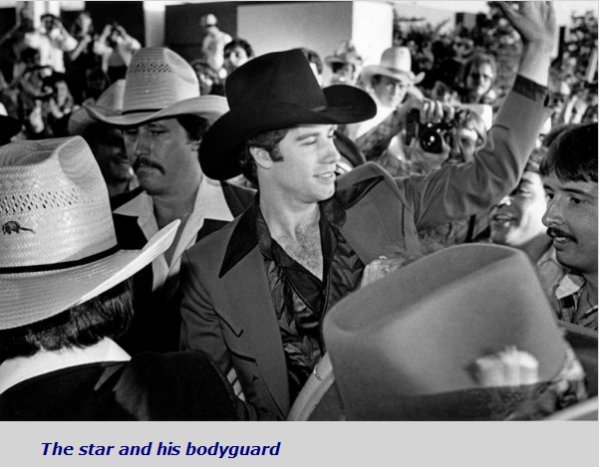
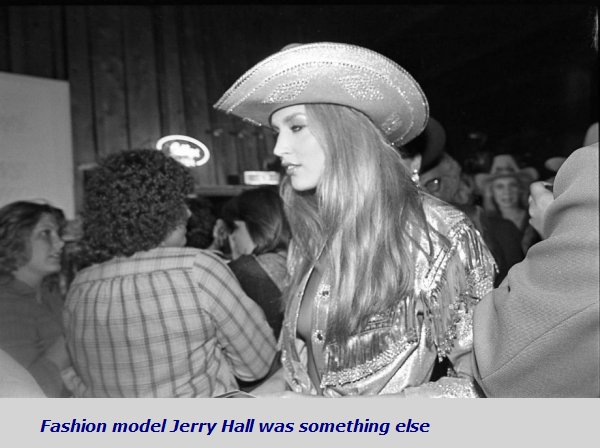
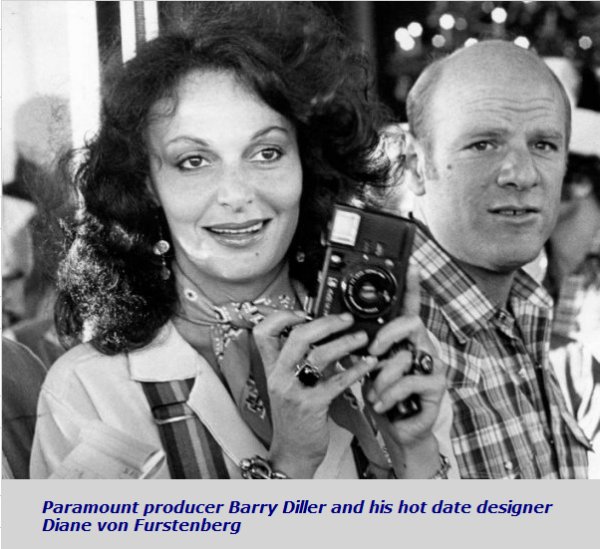
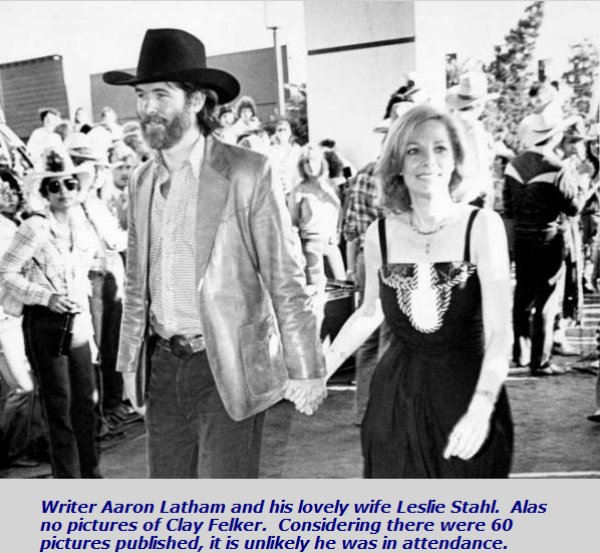
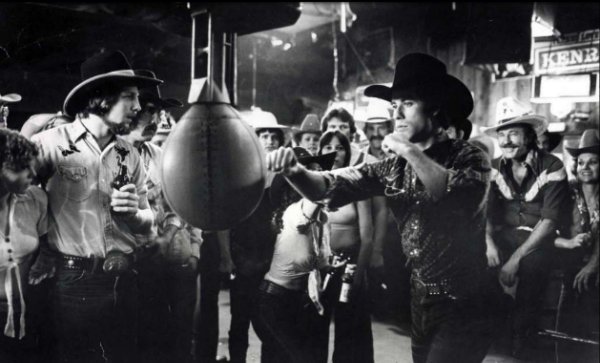
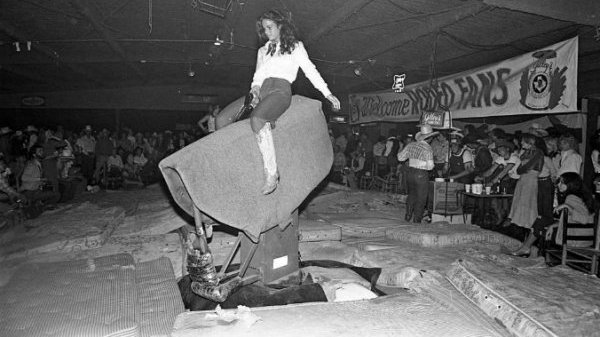 |
When I
finally did see the movie, I agreed with what my
friends told me. This was a really bad movie,
a turkey of the highest magnitude. The vote
was unanimous. The only reason Urban
Cowboy made a dime was John Travolta.
There was not one likeable character in the movie.
Scott Glenn, the villain, was the only actor with
the slightest bit of charisma.
As for
the romance angle, it was a tough sell. There
was one particular scene that made the audience
cringe. John Travolta gets jealous at Gilley's. And why does he get jealous?
Because his girlfriend Debra Winger can ride the
mechanical bull better than he can. So what
does Travolta do? He teaches her a lesson.
And how does he do that? Travolta strikes
Debra Winger hard in the face. Hurt and
humiliated, Debra runs out of the club and tries to
hitch-hike. John gets in his truck, catches up
to her and orders Debra to get in.
Debra
refuses, so Travolta gets out and lifts Debra off
her feet. Debra resists and they fall into a
giant muddy pothole. As they wrestle in the
water, a passing truck nearly runs them over.
At this point Debra realizes the danger and gets in
John's truck. Soaking wet and covered in mud,
Debra is astonished when John impulsively asks her
to marry him. Her face is badly bruised from
the blow and her body is sore from the wrestling
match. So of course Debra says yes.
Wow!
That's chemistry, baby. You don't get scripts
as clever as that every day.
|
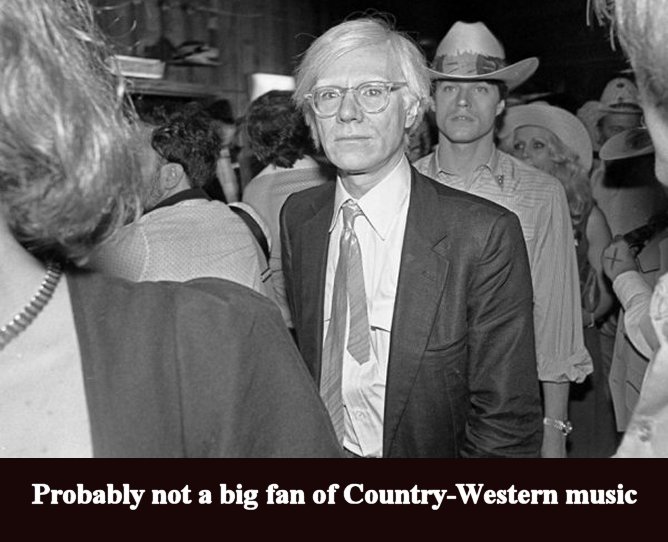 |
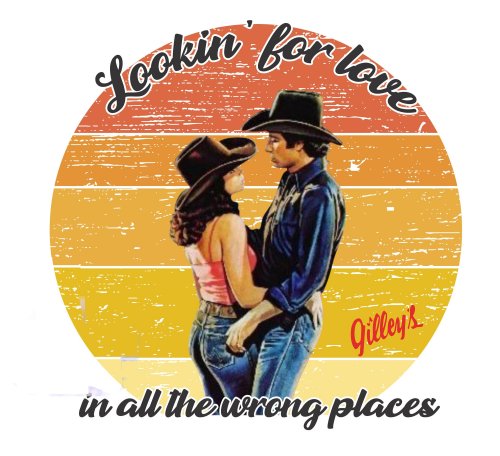 |
Be that
as it may, Travolta's stardom saved the day. I
will leave it to Johnny Lee, singer of the hit
record 'Looking for Love', to tell it
like it is.
Johnny
Lee had toiled in relative obscurity his whole life.
After his discharge from the Navy, Lee played cover
tunes in Texas nightclubs and bars throughout the
late 1960s. Johnny Lee worked 10 years in
Mickey Gilley's shadow, both on tour and at
Gilley's. He was a popular singer in
Pasadena, but that is where his fame stopped.
Local
songwriters had penned the song Looking for
Love, but so far it had failed to drum up
interest. The song had been turned down by 20
singers prior to offering it to Johnny Lee.
Lee thought it was a pretty good song, but he never
bothered trying to record it. Instead he
incorporated the song into his act at Gilley's.
One night Irving Azoff, film producer of Urban
Cowboy, gave Lee the shot to record the
song. Looking for Love became a
huge hit and propelled Johnny Lee to the limelight.
Over time, the song would come to be considered a
benchmark for the music shift to a new direction.
Here is
what Johnny Lee had to say.
"When
Urban Cowboy came along, my
thoughts were, 'If this song is a success, this is really going
to slingshot my career. And if it isn't, it's going to
shoot me backwards and knock down everything I'd been
working for.' I didn't know which way it was going to
go, but I thought it was a pretty big deal having John
Travolta. I'm still grateful Travolta
put on that cowboy hat and made that movie."
|
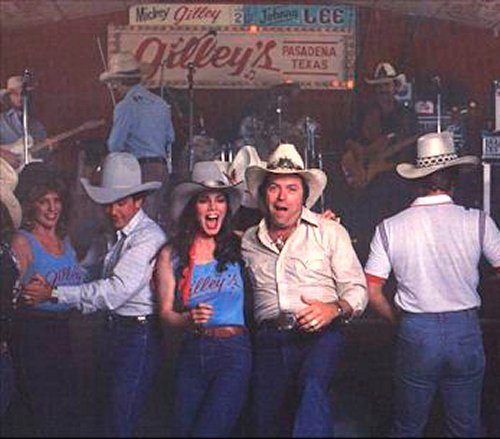 |
Johnny Lee was
not the only person to credit John Travolta for the
success of the movie.
Based on the success of Saturday Night Fever, once
John
Travolta committed to Urban Cowboy, it didn't take much to
convince people to jump on the bandwagon.
Hyped by Clay Felker as the 'Sequel' to the box
office Disco monster, Urban Cowboy became the safest investment anyone
could imagine. Sure
enough,
Urban Cowboy sold a lot of soundtrack albums
and fancy Western outfits.
Nevertheless, there was something very weird about this movie.
The Hoopla came AFTER the debut of Saturday Night
Fever. In the case of Urban Cowboy,
the Hoopla came BEFORE the movie. Or maybe that was
just here in Houston. I assume the presence of Travolta living in Houston
combined with the Marketing Magic of Clay Felker was
responsible.
It is a good thing Felker worked as hard
as he did because the movie turned out to be 'Anti-Climactic'
as they say in show biz. Oddly enough, Felker was not
at the Premiere. I wonder why not. Did he know
something the rest of us didn't? After screaming 'Sequel'
from the rooftops, perhaps Clay Felker feared a lynching
once the rip-off was revealed.
After all the sensational build-up, I can honestly say I have ever been
more disappointed in a movie. The love story was
lame, the chemistry between Travolta and Deborah
Winger was full of mud, and the dancing was atrocious.
However, there was one good thing that came out of this
movie.
Country music improved
dramatically. Or least I think so.
|
|
|